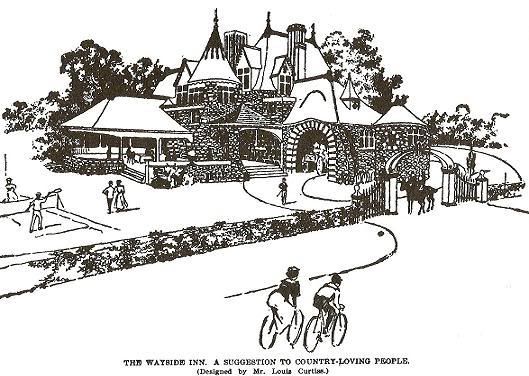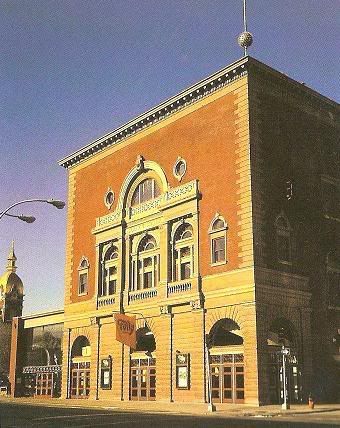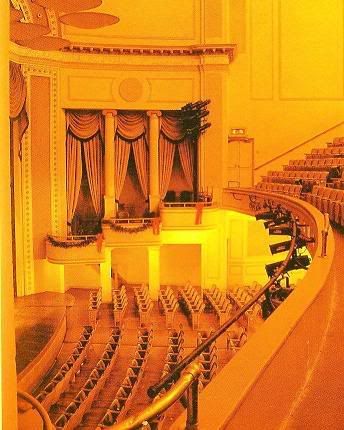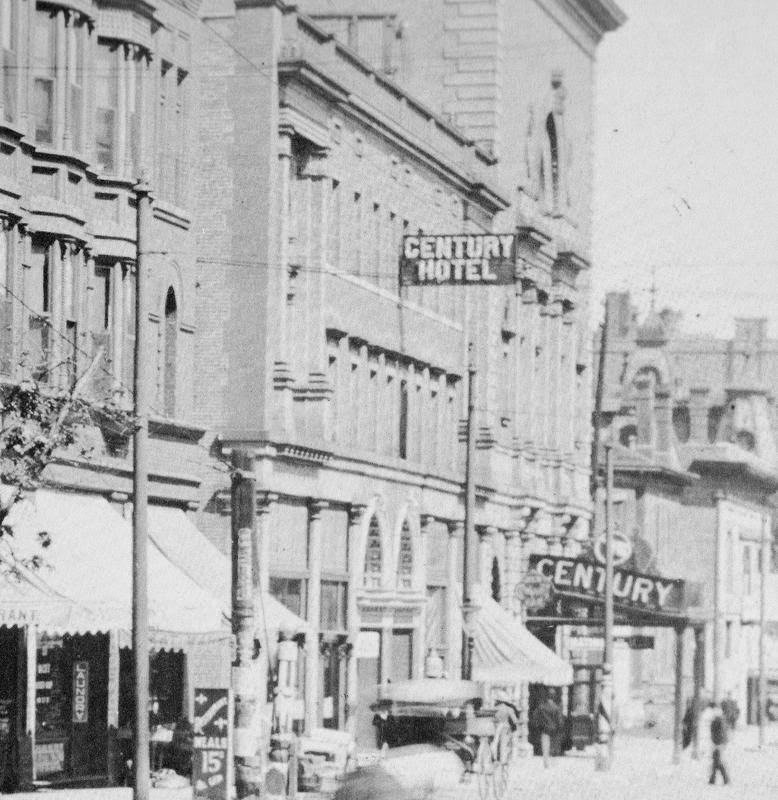Baltimore Hotel (1899) and four later additions; demolished in 1939; Renaissance Revival
(done in practice with Frederick Gunn; but attributed to Curtiss alone)
11th and Baltimore
Kansas City, MO
When completed, it is said to have been the largest hotel outside of New York and Chicago.
The Pompeian room, one of several dining rooms at the hotel, seated as many as 700 persons
Built by the Thomas Corrigan Estate. The building only stood for 40 years and was demolished for parking. City Center Square was later built on the site of the hotel and the adjacent Liberty and Newman (aka Paramount) theaters.
The original portion of the Baltimore Hotel faced the corner of 11th and Baltimore opposite Peck's Department Store.
Images from Missouri Valley Special Collections, Kansas City Public Library, Kansas City, Missouri.



The Baltimore Hotel with the addition facing 12th and Baltimore.
 The Pompeian Room
The Pompeian Room

A performance in the Pompeian Room.
 The lobby in 1900.
The lobby in 1900.


 The grand stairs
The grand stairs
 The reading room
The reading room

 Cigar stand
Cigar stand

The Baltimore facing 12th Street showing the sign.


In 1983, Mrs. Sam Ray said in the Kansas City Times:
Kansas City's famous Baltimore Hotel, between 11th and 12th streets on Baltimore, was described at the turn of the century, during the Democratic National Convention in Kansas City this way:
With but a single exception, the largest hotel in America, outside New York. (The Palmer House in Chicago was larger.)
The Pompeian room, one of several dining rooms at the hotel, seated as many as 700 persons. Its luxurious furnishings of Pompeian red, green, green onyx and gold leaf, with gilded furniture and a Carrara marble fountain brought from Europe, were impressive. Soft chamber music was played by musicians throughout the dinner hour.
An underground passageway conveniently led from the hotel bar to the Willis Wood Theater lobby across the street diagonally, at 11th and Baltimore. It was the finest legitimate theater in the city. The passageway served theater patrons during theater intermissions.
Names of the theatrical greats, foreign dignitaries, political potentates, presidents and business leaders from around the world appeared on the registers of the Baltimore Hotel.
The hotel was built during the years 1898-99 by the Corrigan estate. Louis Curtiss was the architect. It closed Aug. 6, 1938.
At an auction lasting several weeks after the closing of the hotel, everything from old demitasse cups and saucers to fine mahogany dressers with beveled mirrors passed into the possession of persons who wanted the remember the old hotel.
Today City Center Square, the new office tower, occupies the site.
As Henry Van Brunt once wrote: Hotel Baltimore, the grand hotel for three decades, at the very heart of the city, both physically and sentimentally.
Mrs. Sam Ray had this to say about the Baltimore Hotel in the Kansas City Times in 1979:
http://www.kchistory.org/cdm4/item_view ... X=1&REC=19
...The first unit of the hotel at the 11th Street corner (pictured) was built in 1898 and 1899. It replaced the Merril lumber yard. Two stories were added in 1901. This was extended south in 1904, and in 1908 the 12-story building at the corner of 12th and Baltimore was constructed. Louis Curtiss was the architect.
...
The Baltimore Hotel was known for its cuisine. The hotel had one of the most outstanding chefs of the day, Adrian Delvaux. Parties given there included one in honor of Madam Schumann Heink, Caruso, Lillian Russell, several of the nation's presidents and hundreds of others with impressive names and titles.
The block-long hotel, Kansas City's finest (before the Muehlebach), was closed in 1939. The 500 rooms were emptied and all furniture and equipment sold at an auction conducted in the Pompeian Room, once the hub of social and business life in Kansas City. Delvaux came back to Kansas City to attend the sale and was greeted by many friends and patrons of the past.
Today the City Center Square occupies the old hotel site as well as the remainder of the block bounded by Main, Baltimore, 12th and 11th.
In 1968, Mrs. Ray had this to say in the Kansas City Times:
http://www.kchistory.org/cdm4/item_view ... X=1&REC=11
When the first part (six stories) of the Hotel Baltimore was erected at the southeast corner of Eleventh and Baltimore in 1897, it replaced the Merril Lumber yard.
Three additions were built, bringing the height to 11 stories and extending the hotel to Twelfth street, with entrances on Eleventh , Twelfth and Baltimore. A tunnel under Baltimore connected the bar to the Willis Wood theater for intermission libations.
Well remembered are the Renaissance room with Carrara marble columns and the elegant Pompeian room with a marble fountain, which now stands on Wenonga road one block north of Tomahawk road and the site is now occupied by a 4-story parking structure, with street-level stores.
There is no fifth destination.



































